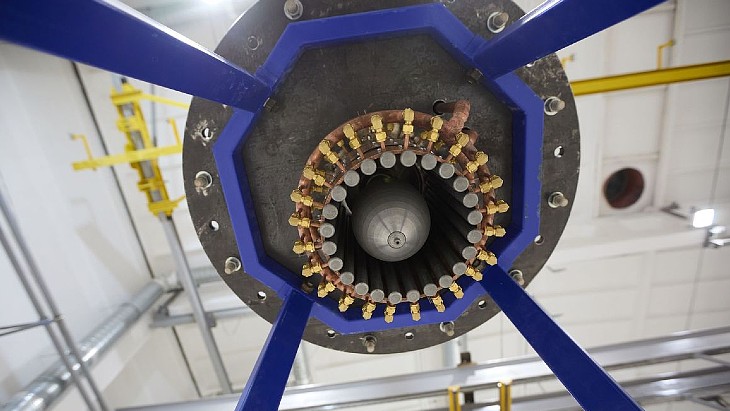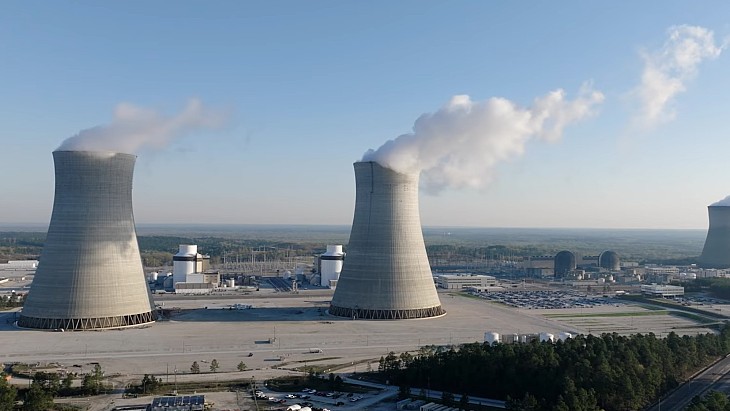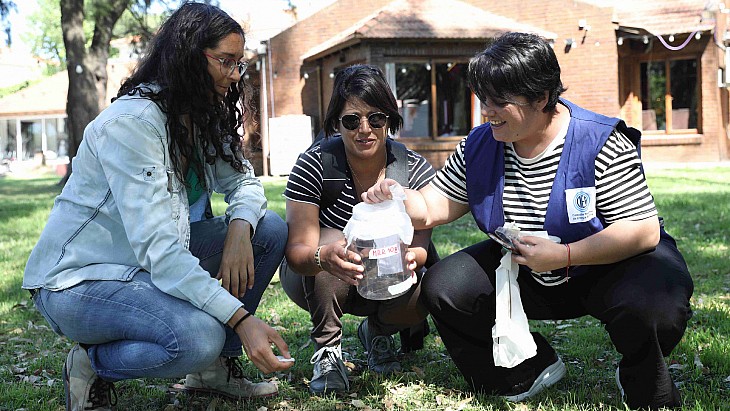Faster-than-light neutrinos puzzle scientists
Friday, 23 September 2011
Neutrinos beamed from CERN in Switzerland to a laboratory in Italy appear to travel faster than the speed of light, breaking the rules laid down by Einstein's theory of relativity. The discovery has been made as part of the OPERA experiment, in which a beam of neutrinos from CERN, the European Centre for Nuclear Research, is beamed to the INFN Gran Sasso Laboratory, some 730 km away near Rome. The result is based on the observation of over 15,000 neutrino events measured at Gran Sasso, and appears to indicate that the neutrinos travel at a velocity 20 parts per million above the speed of light, hitherto assumed to be nature's ultimate speed limit. No measurement artefacts have been found to account for the result, described by CERN research director Sergio Bertolucci as "apparently unbelievable." Given the potentially far-reaching consequences of the finding, further independent measurements are now needed before the effect can be either refuted or firmly established, and the OPERA collaboration has therefore decided to open up the result to broader scrutiny. Neutrinos are electrically neutral elementary subatomic particles that interact very rarely with matter and so can pass underground. The OPERA experiment uses neutrinos generated from CERN's Super Proton Synchrotron (SPS) which are beamed through the Earth's crust from the CNGS (CERN Neutrinos to Gran Sasso) facility, which started up in 2006. The neutrinos complete the journey from Geneva to Gran Sasso in only 3 milliseconds
Neutrinos beamed from CERN in Switzerland to a laboratory in Italy appear to travel faster than the speed of light, breaking the rules laid down by Einstein's theory of relativity. The discovery has been made as part of the OPERA experiment, in which a beam of neutrinos from CERN, the European Centre for Nuclear Research, is beamed to the INFN Gran Sasso Laboratory, some 730 km away near Rome. The result is based on the observation of over 15,000 neutrino events measured at Gran Sasso, and appears to indicate that the neutrinos travel at a velocity 20 parts per million above the speed of light, hitherto assumed to be nature's ultimate speed limit. No measurement artefacts have been found to account for the result, described by CERN research director Sergio Bertolucci as "apparently unbelievable." Given the potentially far-reaching consequences of the finding, further independent measurements are now needed before the effect can be either refuted or firmly established, and the OPERA collaboration has therefore decided to open up the result to broader scrutiny. Neutrinos are electrically neutral elementary subatomic particles that interact very rarely with matter and so can pass underground. The OPERA experiment uses neutrinos generated from CERN's Super Proton Synchrotron (SPS) which are beamed through the Earth's crust from the CNGS (CERN Neutrinos to Gran Sasso) facility, which started up in 2006. The neutrinos complete the journey from Geneva to Gran Sasso in only 3 milliseconds.
Most Read

Mars in 30 days? Russia unveils prototype of plasma rocket engine
Friday, 7 February 2025

Nuclear 'a great field for students or people with trades to go into'
Wednesday, 25 September 2024
.jpg)
William Anders: The astronaut who led the NRC
Friday, 21 June 2024

The fluorescent mosquitoes helping to tackle diseases
Monday, 11 November 2024
Podcasts & Features
In Quotes: Bruce Power's James Scongack
Podcasts & Features Thursday, 17 April 2025
A guide: Uranium and the nuclear fuel cycle
Podcasts & Features Monday, 7 April 2025

Related Links
Related Stories





_88592.jpg)

